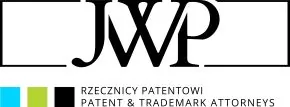- with readers working within the Property industries
packaging keeps up with the latest fashion. Maintaining cohesive communication and design allows the manufacturer to stand out from dozens of competitors. As consumers, we get used to the look of a packaging, which in turn makes it easier for us to find the product on the shelf in a beauty store.
But what does that have to do with industrial property law, particularly trademarks and industrial designs?
As a patent and trademark attorney, it gives me joy to look through the offers of increasingly conscious manufacturers. They are now fully aware of the fact that originality of their product and a well-designed, eye-catching packaging can work wonders. They also know that a well-prepared strategy of brand and product protection can increase the marketing appeal. But does everyone remember about it? Based on my own experiences of collaborating with entrepreneurs, I wrote a short guide on how to prepare for launching a product in a way that will allow you to protect it effectively, while also respecting the rights of other entrepreneurs. In other words, you will learn how to not get lost following trends.
- CHOOSING THE NAME
Entrepreneurs often pick a product name or trademark that evokes strong connotations to the product or its properties. The idea is to make positioning the product and marketing communication easier. Unfortunately, this is one of the most frequent reasons for refusing the registration of a trademark, as the industrial property law often stands in opposition to the marketing approach. The Patent Office will not grant a title of protection, a monopoly, on a name which is commonly used to denote a category of products, or straight up describes its properties or usage. A trademark must have original distinctiveness, i.e., it must not point directly to the product or its properties.
Of course, allusive names do exist on the market. However, they often require extra effort to convince the Patent Office to grant a monopoly and an additional effort to monitor the market and make sure that nobody infringes our title of protection. When we choose an allusive name, we must focus strongly on additional visual distinctiveness of the product – more on that in further sections of this guide.
So, you chose an imaginative, easy to remember, attractive name. What now? The first step is to verify the name, preferably with the help of a professional, who will assess whether the trademark really has original distinctiveness and whether someone does not already protect it. You can take care of the initial verification yourself, using commonly accessible tools, such as search engines and foreign language dictionaries. This preliminary filter will allow you to eliminate names already in use for comparable products on the market, but also names that do not translate well in foreign languages. From my own experience, I can give you an example of a trademark composed of the initials of shareholders in a company which was planning to produce scented candles. After the analysis, they found out that in one European language, the resulting acronym translated into “ugly”. Of course, there are also examples of trademarks with rather unflattering connotations in Polish, that nevertheless function successfully on our market, e.g., OSRAM (unfortunately, a future form of the verb “to sh*t”) or in the cosmetic branch – PUPA (“butt”). These are often global brands, recognisable all over the world, and that is why they remain successful on the Polish market despite the controversial associations. However, when you plan a launch of a cosmetic product on a particular market, it is advisable to do it consciously and consider potential difficulties with the reception of the brand by local consumers.
If this initial selection goes smoothly, the next recommended step is to subject the chosen name to professional verification. It is important to remember that a protective title might not be granted for a trademark not only when an identical trademark already exists, but also when there exists a similar one, and the criteria of similarity are often not as obvious as one might think. That is why you may need the assistance of patent and trademark attorneys, who use professional searching tools, and who will help you assess the potential risk connected to registering and using a chosen name. Such a report will help you prepare a strategy and allow you to plan potential reactions. Rejection of your application for a registered trademark need not mean it will be necessary to change the name – an experienced patent and trademark attorney will help you find the best solution.
- PACKAGING, DESIGN, COLOURS
And what if you have an interesting packaging or ornament design, or you want to stand out with a particular original colour? Industrial property law gives you the tools to protect these categories as well. Even just the shape of the packaging or its characteristic colour pattern may be registered, sometimes as a trademark and sometimes as an industrial design. The first category is based on the criterion of informing the consumers about the source of the product, and an industrial design must be new (on a global scale) and have an individual character. An experienced attorney will help you choose the right tools for protection, depending on whether you are working with an interesting packaging, ornaments, a characteristic font, an innovative way to close the packaging of the product or a way to measure it. In the latter cases it may even turn out that the ideas might be eligible for protection as patents or utility models.
Undoubtedly, it is tempting to monopolise a colour but in reality, it is not that easy. For a particular colour to be registered in the name of a specific entrepreneur, intentions are not enough. It often requires long-standing, intense, consistent use of the colour as a trademark on products and in communication, so that an average consumer of products from this category of goods will associate the colour with the manufacturer and their products immediately upon seeing it. The existence of such associations must be supported by solid proof, including market research.
- TERRITORY
Industrial property rights are limited by territory. This means that when you register a trademark or a design in a particular country, you receive protection only on its territory. There are tools which allow you to assert your rights in case of infringement even if you do not have a registration; however, the title resulting from registering a trademark or design is among the most effective tools of protection.
Trademark owners often ask if it is possible to register their trademark worldwide. Theoretically, yes. However, most countries have their own systems of industrial property protection. There is no one system which would allow you to register a trademark all over the world by filing a single application. Countries, but also international institutions which unite different territories, offer different solutions which may be tailored to particular needs (production or distribution plans), but we must expect to pay a proper price for this investment.
Here too, a good plan will be indispensable. Certain steps should be taken at the beginning of market activity or even before, while others can wait for a more appropriate time. When creating such a plan, it is important to consider where the products will be available soon – in the next five years. In the beginning, it can be a protection, e.g., only in Poland or European Union, then we may proceed to extend it into markets with the best potential, where we will introduce our products. In recent years, there can be observed a steadily increasing interest of cosmetic brand owners in protecting trademarks on Middle Eastern markets.
An experienced patent and trademark attorney will calculate the needed investment, and will help you devise the necessary steps, considering your sales and marketing plans. In this case, one of the helpful tools will be claiming priority: at the beginning, the trademark/design is registered on the “first” territory, and after some time, when the product begins to bring profit, the company applies for protection on other territories, claiming priority. To put it simply, on the new territory, a given trademark or design will be protected starting from the date of registration in the first, base country. You have to be careful though– it is not always and not everywhere that you can claim priority.
- FINANCE
Industrial property protection is an investment which, thanks to a carefully prepared strategy, will certainly pay off, even if only in the form of eliminating the unnecessary disputes or being forced to rebrand. It must also be emphasised that well managed brands can achieve considerable value and become objects of trade. Industrial property rights are of tangible nature and increase the value of the company.
Fees related to acquiring protection are usually an expense covered once every 5 to 10 years – that is how long trademark or industrial design protection usually lasts before the necessary renewal. The costs are different in different countries and regions, so assistance from a patent and trademark attorney will let you prepare a more cost-effective strategy.
There are also numerous programmes which offer funding for industrial property rights. European Union Intellectual Property Office reimburses micro, small, and medium entrepreneurs even up to EUR 1000 for official fees paid to register designs and trademarks. Some Regional Development Agencies offer funds for consultations and counselling in matters of industrial property. The formalities necessary for a grant are not complicated, and a patent attorney can also help to obtain them.
All of the above recommendations boil down to one word – STRATEGY. Industrial property rights protect original solutions and are a tool for building your company's position on the market. A well thought-through strategy and effective intellectual property rights management will support your development and bring the company tangible benefits.
The content of this article is intended to provide a general guide to the subject matter. Specialist advice should be sought about your specific circumstances.


